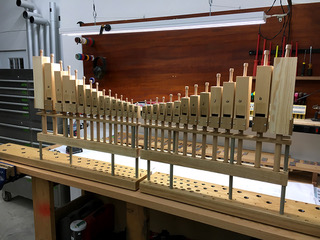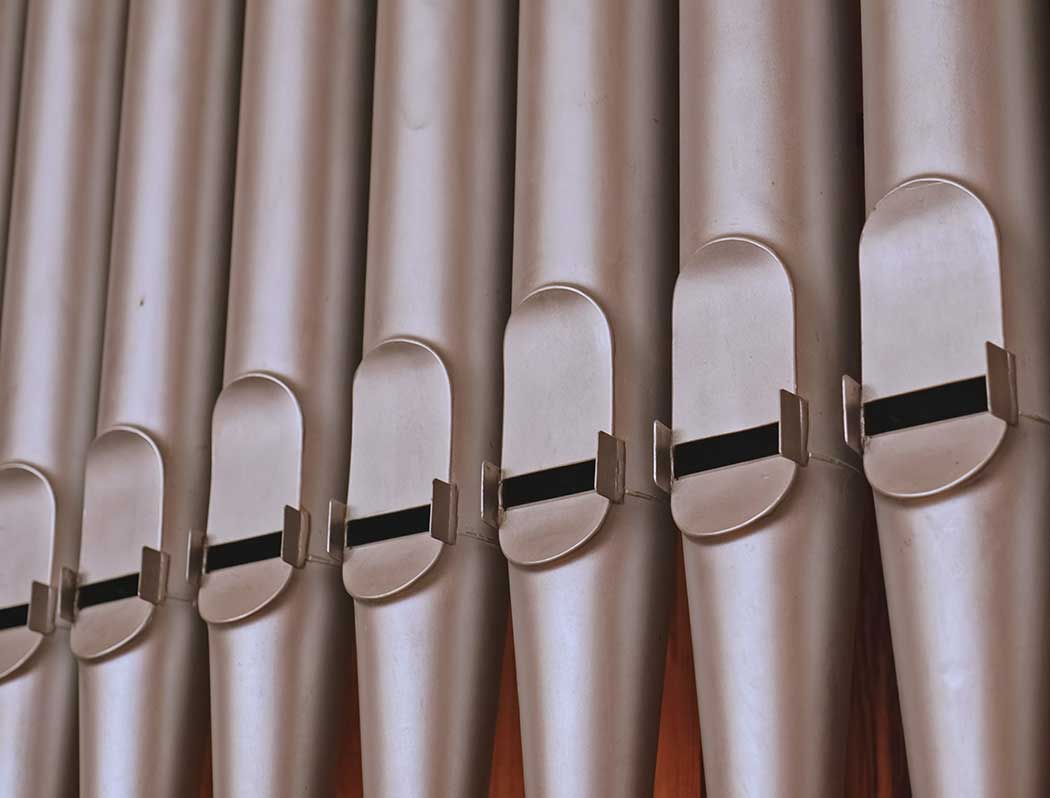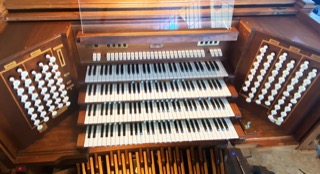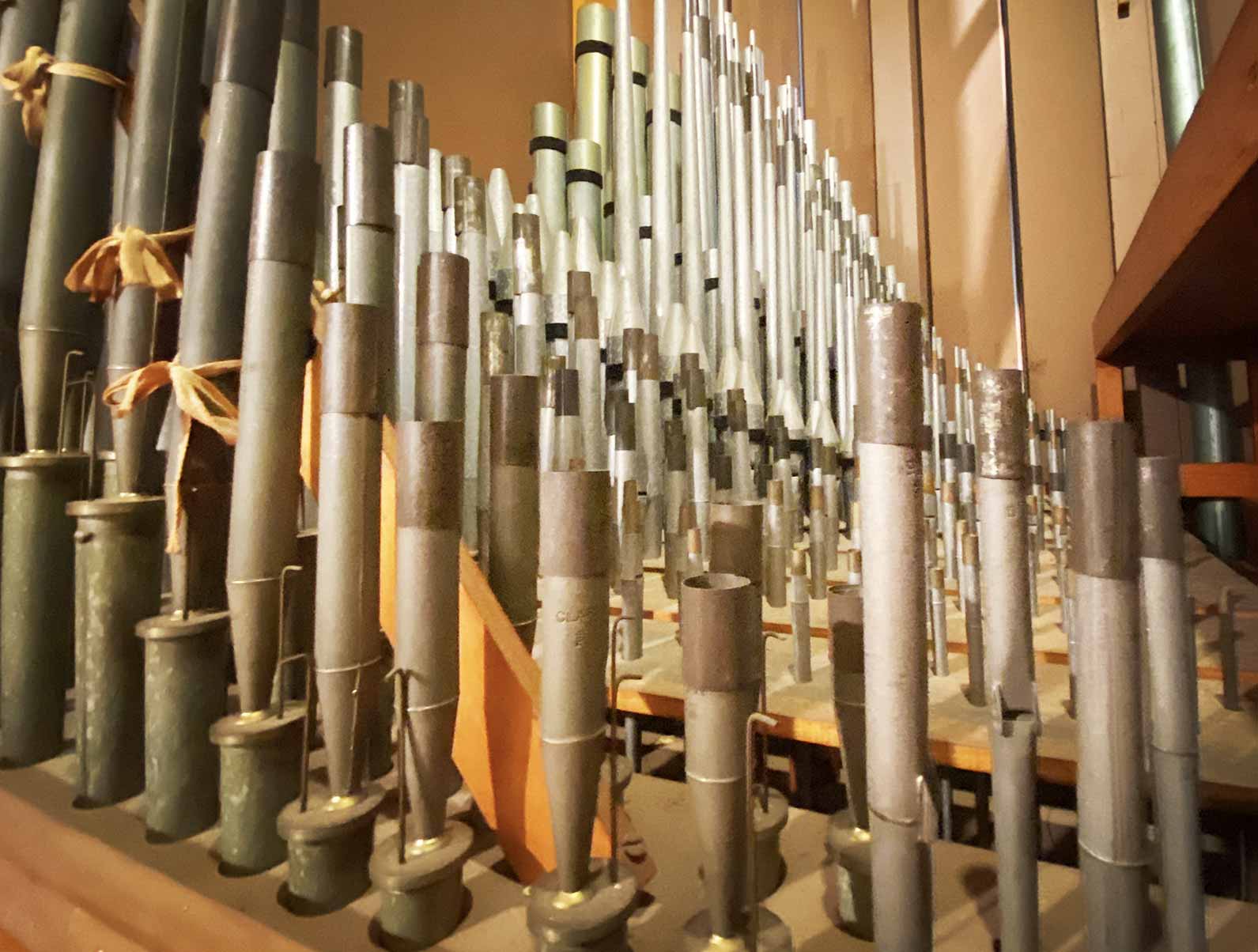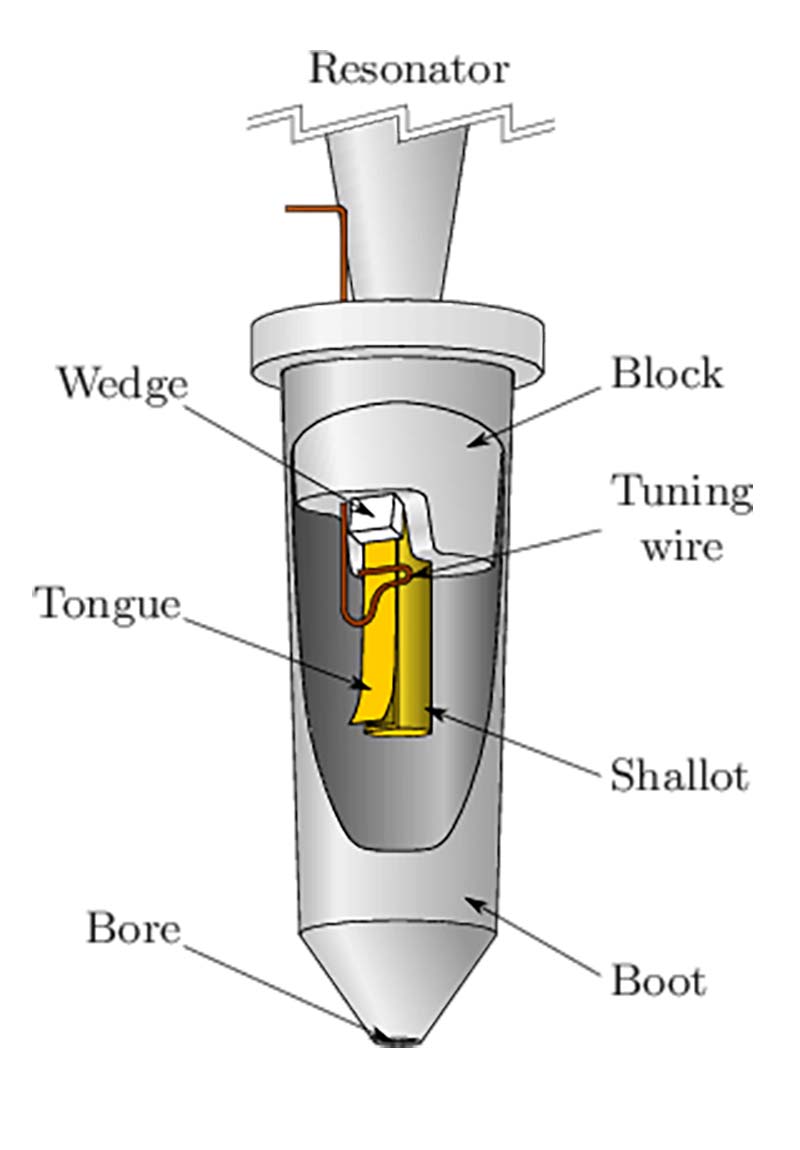How Organs Work
Learn about
pipe organs
Conventional pipe organs like the Pasadena Community Church organ, consist of four main parts:
- A keyboard or keyboards and other controls
- Pipes to produce the tone
- A device to supply wind under pressure
- A mechanism connected to the keys for admitting wind to the pipes
The most basic instrument consists of a single set, or rank of pipes with each pipe corresponding to one key on the keyboard, or manual.
Organs like the Pasadena Community Church organ, possess several sets of pipes which is why the Pasadena organ requires several keyboards and a pedal board.
The reed pipes in the above photo have that small tuning wire at the base of each pipe.
“Reeds” have two major parts that determine the overall tone and volume. The first is the resonator, the familiar pipe tube that is sometimes cylindrical (clarinets, krumets), sometimes conical (tubas, trumpets), and sometimes capped (vox humanas, French horns). The second, and hidden part, is the reed (also known as the “tongue”) and the shallot on which it is held. This assembly is at the bottom of the pipe (resonator) and is contained in the block where the resonator ends. The mechanism of reed and shallot is mounted into the block and housed in the boot of the pipe, which can be removed to allow the technician to work on the reed.
Our organist is playing with his feet and hands at the same time.
The organist has various ranks of wooden and metal pipes of differing length and shape to work with. You only see about half of the thousands of pipes from the sanctuary.
Hidden behind the wall are hundreds and hundreds of pipes from the size of a pencil to pipes that are so big you would need an extension ladder to reach the top. Every single pipe has to be tuned to precisely the right pitch to produce the sound that stirs us on Sunday mornings.
(Courtesy Garden State Theatre Organ Society)
A “flue pipe” responds to greater or less wind pressure to determine its volume. Flue pipes include the string, diapason and tibia/flute ranks in the organ.
Voicing is an extensive process of trial and error to determine what characteristics blend together best for the particular instrument being voiced. “Voicer” experts spend years learning the process. This is a workbench where an expert is “voicing” church organ pipes.
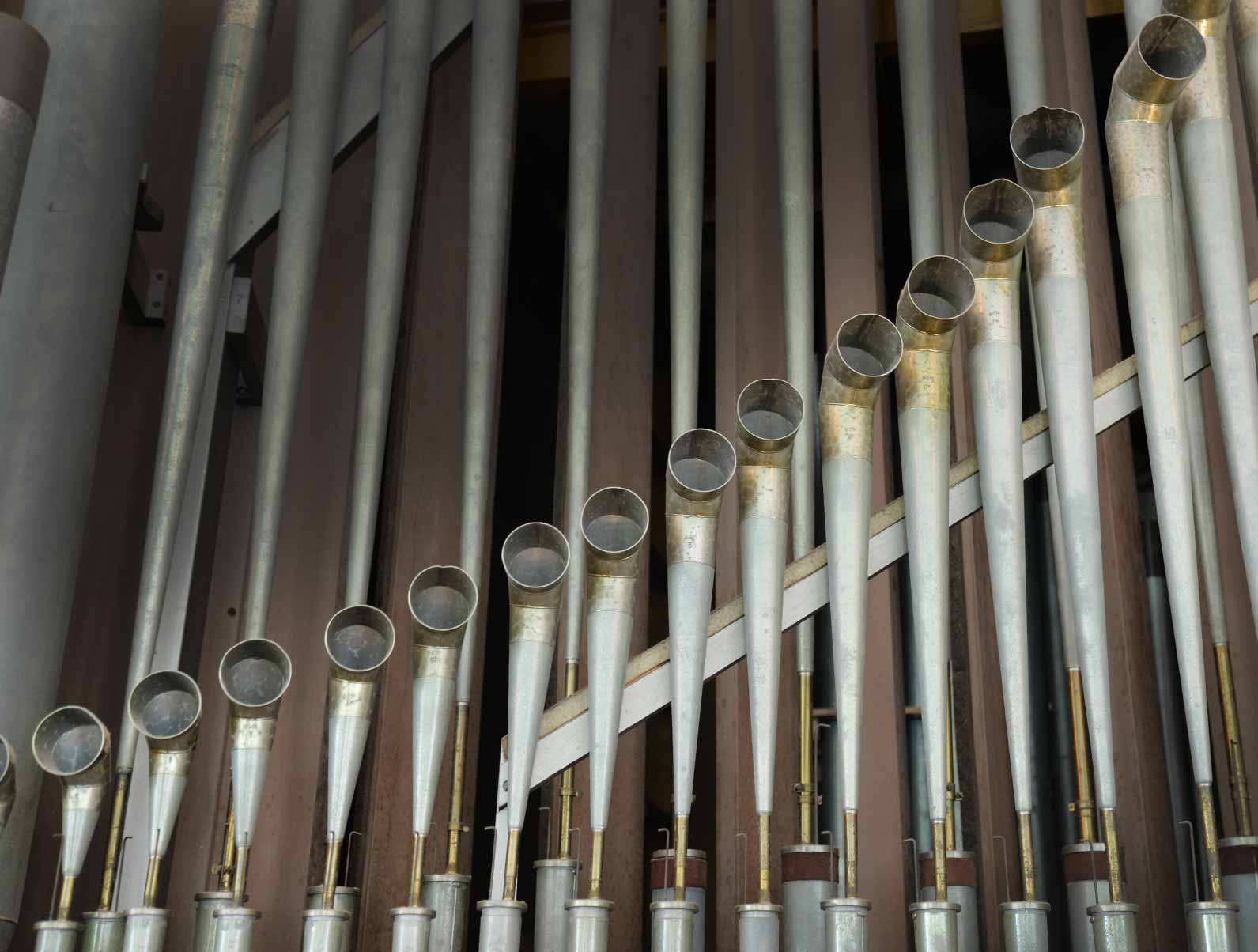
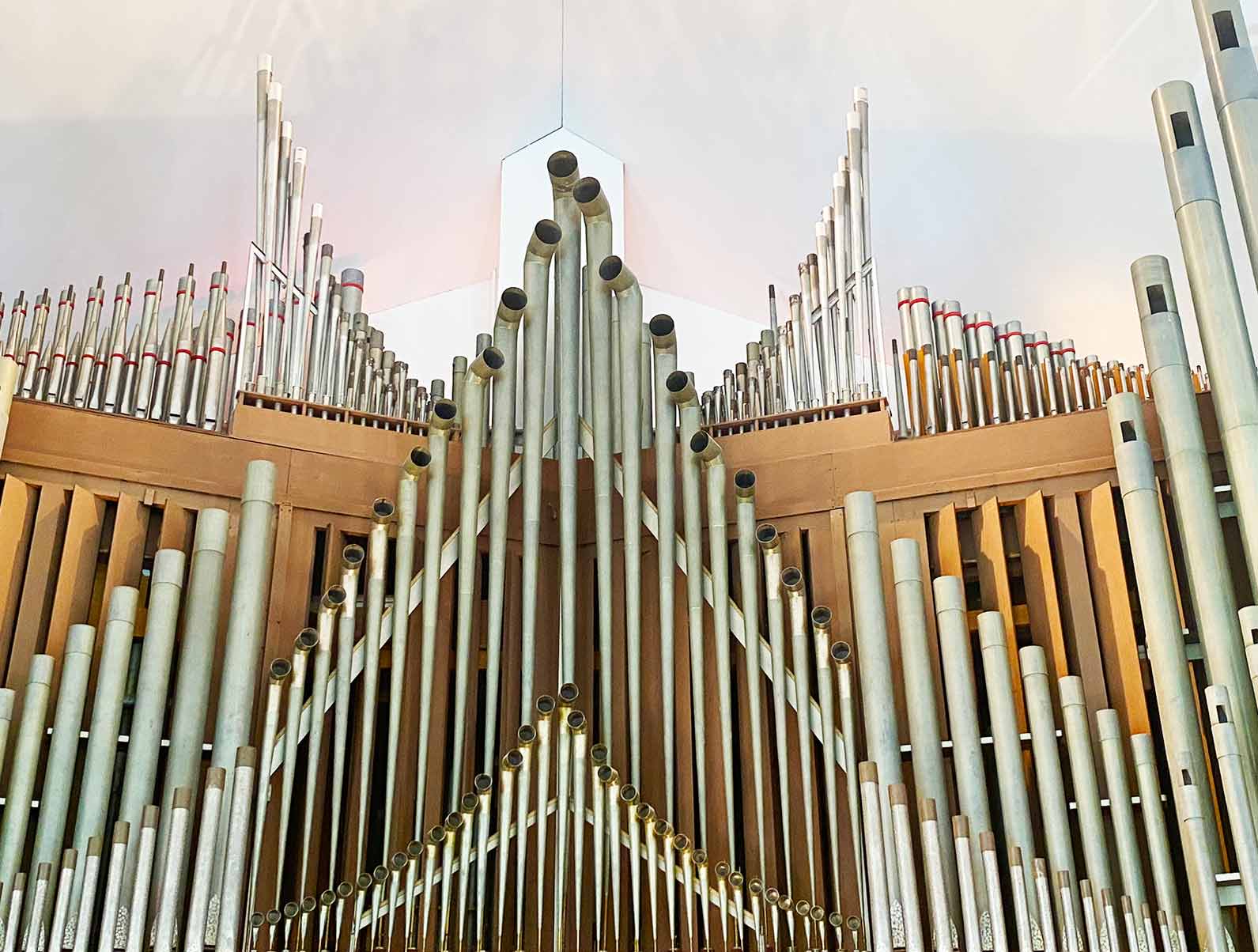
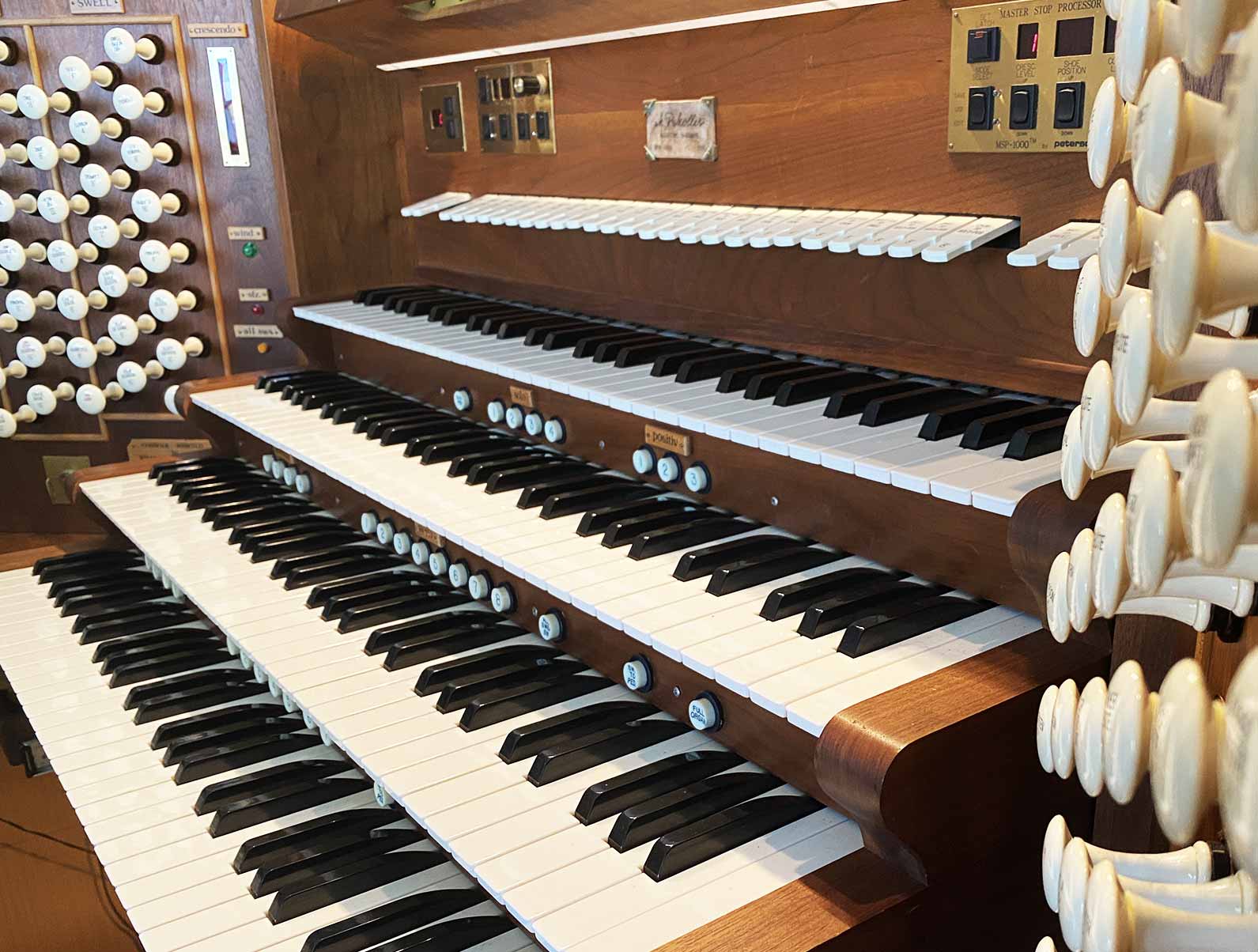
“The Church knew what the psalmist knew: Music praises God. Music is well or better able to praise him than the building of the church and all its decoration; it is the Church’s greatest ornament.”
– Igor Stravinsky
